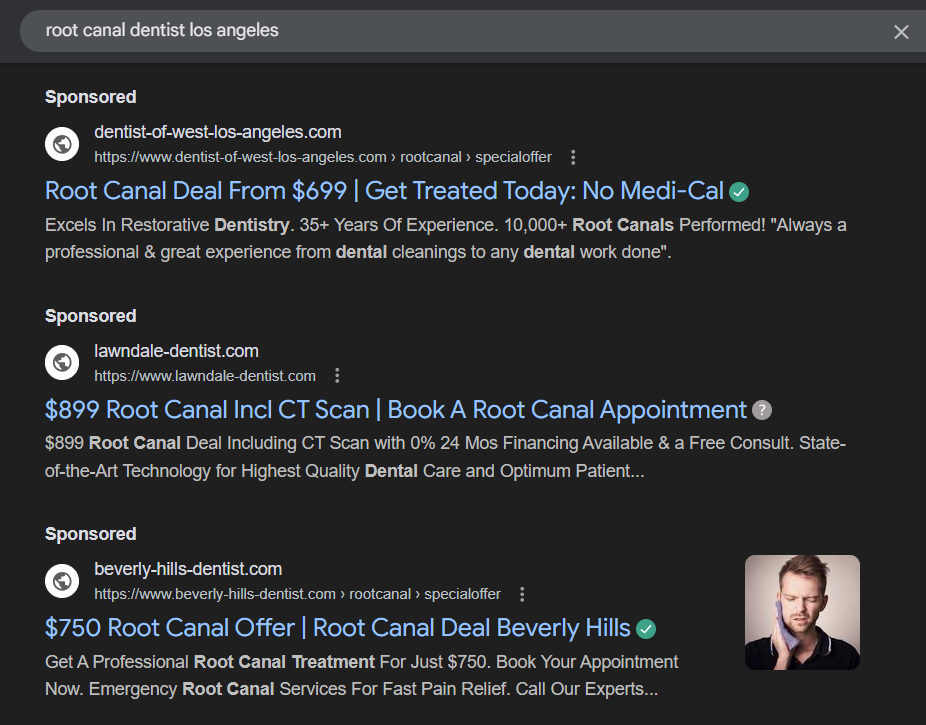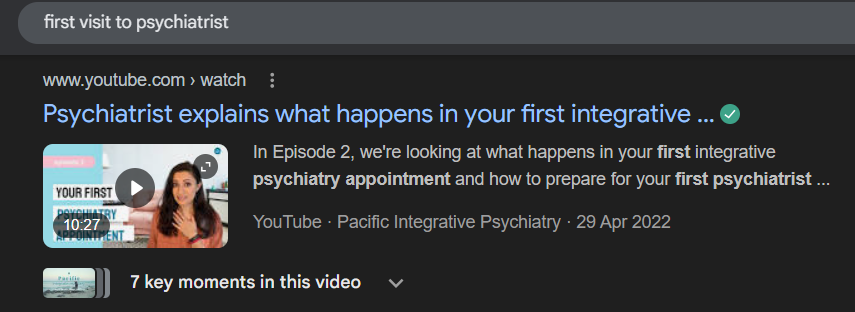Healthcare Paid Media & PPC Strategies That Work
PPC is ideal for quickly filling appointment slots, controlling spend by location and service line, and meeting patients at the exact moment of intent.
Build Tight Keyword Groups by Patient Intent For your Paid Advertising Campaign
- Service: “pediatric urgent care,” “primary care clinic,” “MRI center”

- Condition/procedure: “rotator cuff surgery specialist,” “root canal dentist”

- Cost/insurance: “MRI cost near me,” “OBGYN accepts Blue Cross”

- Access: “same‑day appointment,” “walk‑in clinic”

Match types and control:
- Use exact phrases for your best terms.
- Test broad match in separate ad groups only after you have strong negatives and relevant landing pages.
Separate brand vs. non-brand:
- Brand protects your name and referral traffic.
- Non-brand brings net-new patients—watch it closely for policy flags and irrelevant queries.
Negative keyword starter list:
- Jobs, careers, salary, training, school, PDF, research, DIY, home remedies, ER/emergency (if you’re not an ER), free, Groupon, malpractice, forum, Reddit, Wikipedia.
Sample build for “MRI” line:
- Exact: [mri cost near me], [open mri near me], [same day mri]
- Phrase: “MRI center near me,” “MRI without referral”

- Negatives: CT vs MRI, difference, images, radiology jobs, how to read MRI
Location, Timing, and Device Settings
- Geo-targeting: Utilize tight radii or ZIP codes around each clinic and split campaigns by location if catchment areas differ.
- Dayparting: Show more ads when phones are staffed.
- Urgent care: early mornings and weekends.
- Elective: evenings and late afternoons.
- Device strategy: Mobile-first for urgent and on-the-go searches. Ensure click-to-call and short forms. Then, move to desktop/tablet for research-heavy specialties (e.g., orthopedic surgery).
Expand Safely Beyond Search (Only After Search Is Stable)
- Contextual Display/YouTube: Target medical topics and specific reputable sites. Avoid health-interest audiences, lookalikes, and remarketing for patient-facing services.

- Placement controls: Maintain a safelist of credible publishers. Exclude mobile app categories and low-quality placements.
- Microsoft Ads: Mirror winning Google structures, often cheaper clicks for incremental volume.
Ad Copy and Assets that Patients Trust
- Lead with trust and access: “Board-certified providers,” “Same‑day & next‑day appointments,” “Most insurance accepted,” “Se habla Español.”
- Strong calls-to-action: “Call to schedule,” “Book online in 60 seconds,” “Get results in 24–48 hours.”
- Assets to add: Call asset (or call-only ads for urgent lines), location asset, structured snippets (Services, Insurance), sitelinks (New Patients, Insurance, Locations, Book Now), price assets where allowed.
- Claims and tone: Avoid guarantees (“100% cure”), scare tactics, or implying you know the user’s condition.
Landing Pages that Convert and Meet Medical Content Standards
- Above-the-fold actions: Big “Call now” and “Book appointment” buttons; click-to-call on mobile; map and hours visible.

- Keep it simple: Use short forms (name, phone, preferred time). Explain insurance in plain language.
- Build credibility: Doctor names, credentials, brief bio, affiliations, reviews/testimonials (responsibly), clear privacy/consent notice.
- Technical quality: Fast load speed, ADA/accessibility basics (contrast, alt text), no pop-up overload.
- For YMYL (Your Money or Your Life) topics: Include the reviewer/clinician's name and review date, along with a link to reputable references where relevant.
Measurement Without Privacy Headaches
- Safe conversions to track: Calls from ads, calls from your website (use HIPAA-capable call tracking), appointment request submissions.
- What not to do: Don’t send personal health info through URLs or to ad platforms. Avoid remarketing tied to health interactions.
- Consent and tagging: Use a cookie/consent banner; hold non-essential tags until consent is given. Additionally, consider server-side tagging to strip out identifiers and health-related parameters before forwarding events.
- Offline signals: If possible, import de-identified “appointment kept” or “treatment started” conversions to improve bidding (only when privacy-safe).
Smart Bidding and Budget Playbook
- Bidding sequence: Start with Maximize Conversions (using safe conversion actions). Then, move to target CPA once you have stable data; consider value-based bidding for elective lines (use proxy values, such as qualified call duration).
- Budget allocation: Fund the service lines with appointment capacity first. Shift budget to locations with shorter wait times to improve show rates.
- Seasonality: Expect spikes (flu season, back-to-school physicals). Increase budgets and adjust bids during known periods of peak demand.
Account Architecture for Control and Scale
- Structure: One campaign per service line (and per location if needed). Tight ad groups by intent (service, condition, cost, access).
- Shared negatives: Keep a master negative list (jobs, DIY, education, ER, malpractice, student).
- Labeling and QA: Label top keywords and tested ads; keep a simple changelog to understand what drove results.
Operational Alignment (Your Front Desk Matters)
- Phone-first reality: Most healthcare leads are made through phone calls. Ensure lines are staffed well, voicemails are monitored, and missed calls are returned fast.
- Intake scripts: Train staff to quickly confirm insurance, location, and appointment time. Track qualified call duration as a quality signal.
- Numbers and routing: Use tracking numbers per campaign/location; route to the right site to reduce transfers.
Insurance and Payer Mix Filters for Healthcare Organizations
- Set expectations in ads and landing pages: “Most PPO plans accepted,” “Medicare welcome,” or “No Medicaid” (only if accurate and compliant).

- Add negatives if needed: If you do not accept specific payers, exclude frequent queries containing them to avoid mismatched clicks.
Specialty Mini-Playbooks
- Urgent care: Emphasize walk-in access, short wait times, and extended hours of operation. Daypart to peak times. Use call-only ads. Exclude ER queries.
- Imaging (MRI, CT, X-ray): Focus on speed, open MRI availability, and transparent pricing. Add “no referral” if applicable. Use call and location assets.
- Orthopedics: Condition/procedure clusters (ACL, rotator cuff, hip replacement). Showcase surgeon credentials and outcomes responsibly.
- Women’s health/OBGYN: Access (new patient appointments), specific services (prenatal, IUD, fibroid treatment). Insurance clarity is key.
- Dental: Emergency, cosmetic, and family clusters. Promote financing and evening/weekend hours if offered.
- Behavioral health: Be extra careful with language and targeting. Emphasize confidentiality, access, and credentials. Avoid remarketing.
Compliance Guardrails (Simple Checklist)
- Don’t use remarketing/lookalike audiences for patient-facing services.
- Don’t make guarantees or imply knowledge of a person’s health.
- Get certifications where required (e.g., addiction treatment).
- Keep PHI out of ad platforms and analytics; use HIPAA-capable tools and BAAs where appropriate.
KPIs You Can Explain to Your Team
- Cost per lead (CPL) and cost per qualified call
- Appointment request rate and booked appointment rate
- Show rate (appointments kept) and cost per start (if relevant)
- Share of voice for priority keywords (impression share)
- Call answer rate and missed call recapture rate














